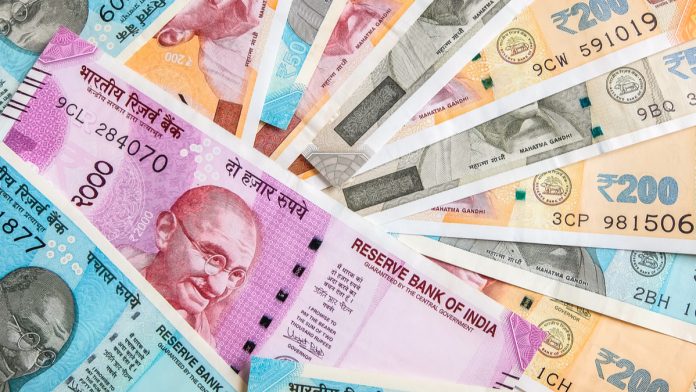- Indian Rupee (INR) extends gains
- Indian manufacturing activity expands at fastest pace in 8 years
- Data shows 2 months of expansion
- US Dollar (USD) eases as risk sentiment rises on stimulus hopes
The US Dollar Indian Rupee (USD/INR) exchange rate is trending lower on Thursday, extending losses for a third consecutive day. The pair settled -0.3% lower on Wednesday at 73.56. At 10:15 UTC, USD/INR trades down -0.5% lower at 73.21 after hitting a 7 month low of 73.02. This as a level last seen pre-pandemic.
India’s factory activity grew at the quickest pace in over 8 years in September. An easing of lockdown restrictions resulted in demand and output both soaring. The Nikkei IHS/Markit Manufacturing PMI jumped to 56.8 in September, up from 52 in August. The level 50 separates expansion from contraction. This was the second straight month of expansion and the highest reading since 2012.
The data revealed signs of recovery in Asia’s third largest economy which is on track to record its first economic contraction in over 40 years. With covid cases at over 6.3 million and infection spreading faster than anywhere else in the world, the outlook remains uncertain, but these figures are certainly a sign that the economy is moving in the right direction.
Yet even though the sector was expanding solidly the data also revealed that firms cut staff for the sixth straight month, adding to the millions of job losses that the covid pandemic has created.
Looking ahead, economists do not expect the Reserve Bank of India to offer much support as the central bank is expected to keep rates on hold as it battles rising inflation.
Arising risk sentiment is also underpinning the Rupee. The upbeat mood in the market amid better than expected US data and growing optimism surrounding an additional US fiscal stimulus package.
Congress appear to be closing in on a compromise between the Democrats $2.2 trillion proposal and the Republicans $1.6 trillion plan. The prospect of additional support in the world’s largest economy is boosting demand for riskier currencies and dragging on the safe haven US Dollar.





